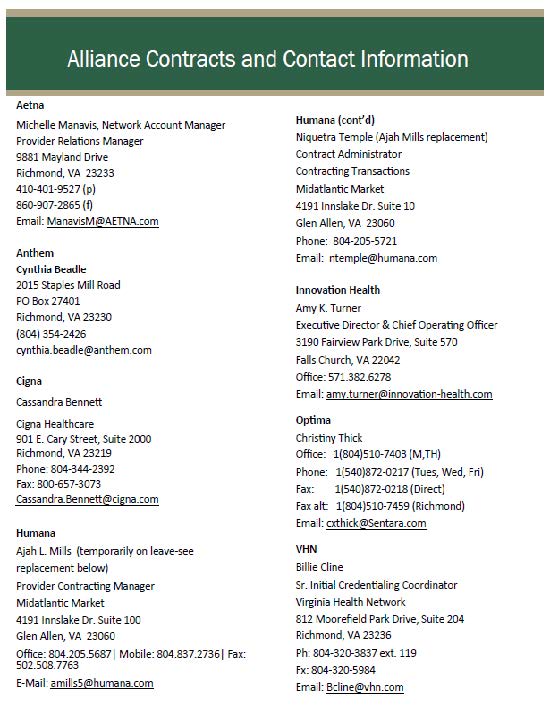Message from Jeffrey Frazier, MD
 Since last we updated the progress of the Alliance's Finance and Contracting
Committee, much has happened.
Since last we updated the progress of the Alliance's Finance and Contracting
Committee, much has happened.
On the Finance side, we instituted a new per member per month (PMPM) payment
to our primary care physicians taking care of our Medicare population.
Our success in the BPCI [Bundled Payment Care Initiative] has strengthened
both our balance sheet and our income statement.
We attained shared savings in our Mary Washington Healthcare population
for the second year in a row. For the first time we also reached the savings
threshold to participate in our Collaborative Accountable Care (CAC) Program
with CIGNA. Both of these programs contribute to the successful financial
performance of the Alliance.
We distributed our largest performance distribution to our Alliance physicians.
While the specialists all received the same distribution, our separate
PCP distribution was structured to increase payments to those providers
based on the number of Alliance patients attributed to them. This is our
continued progression to trying to tie distributions to performance and
reward the physicians doing the work of the Alliance.
Through collaboration with our physician partners, three new QUE programs
were initiated, one involving major joint lower extremities, the spinal
surgery program and the cardiac defibrillator implant program - all of
which have generated savings for the health care system, and income for
both the Alliance and responsible physicians.
On the Contracting side, we signed a new single signature payor contract
with Aetna. Not only did this result in the first Aetna rate increase
in more than 10 years, it included escalators for the rates in years 2
and 3, similar to the other two contracts we have signed, with VHN and Optima.
We also signed a new shared savings arrangement with Anthem, our first
contract with Anthem, something we were never able to attain in Pinnacle.
In addition to a shared savings component, this contract also includes
new per member per month payments for our primary care practices that
will be included in our Commercial Collaborative Care Coordination Program.
We formalized our combined negotiating team with the health system to
maximize the quality, efficiency and benefits of the physicians and health
system negotiating as one entity to benefit the providers delivering the
care, the employers paying for the care and the patients of the community
receiving the highest quality of care.
